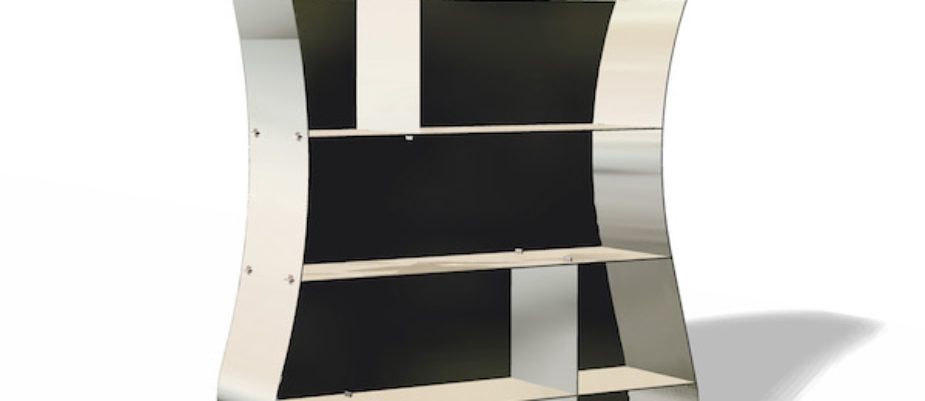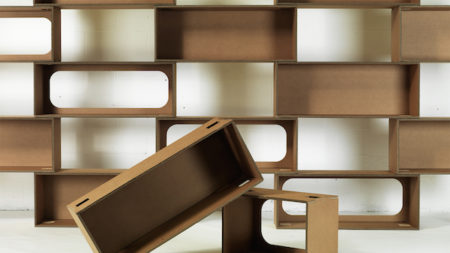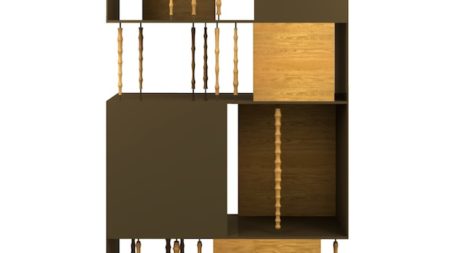
By definition, a bookcase is made of shelves – basically rectangular and horizontal surfaces – and someone has already thought how to tilt or bend them, so to keep on doing that would be repetitive.
So, innovation changes direction: composition details – graphic signs or small architectural components – or modularity and structural assembling systems. The 2014 trends mostly concern the choice of new materials unrelated to industrial design and shapes denying the conventional orthogonality: the books are still rectangular, the bookcase isn’t anymore.
Captions
1, De Castelli, Oxymore, design by Xavier Lust. Thanks to its play of hold whistles and fittings, forces contrast each other harmoniously. The bookcase that seemed in motion is immobilised.
2, Mattoni design Giorgio Caporaso. It’s a system of stackable modules made of wood or cardboard (100% recyclable), to assemble and disassemble easily to redefine and redesign the spaces, creating equipped walls, bookcases, space dividers and seats.
3, Contempo, Bambook, design by Luca Scacchetti. Bookcase of small size in bambù cane and wood.
4, Dialma Brown, bookcase DB003742 industrial e shabby chic style, made of raw wood and steel structure.


















